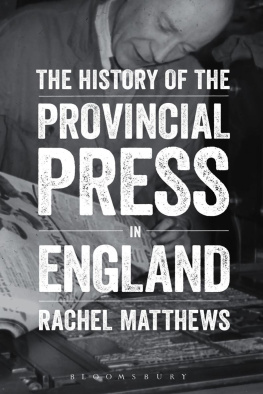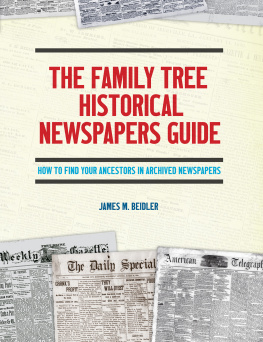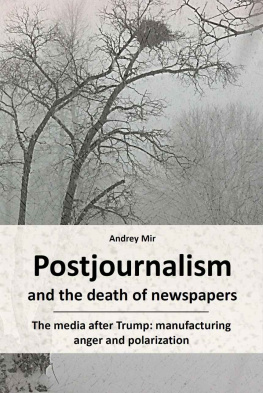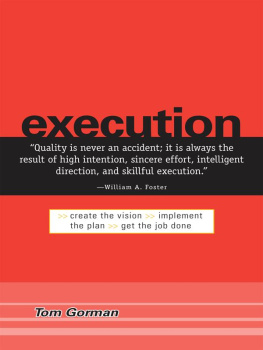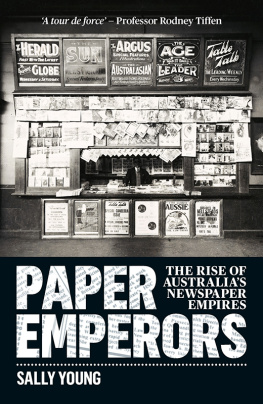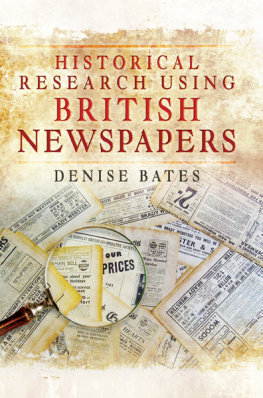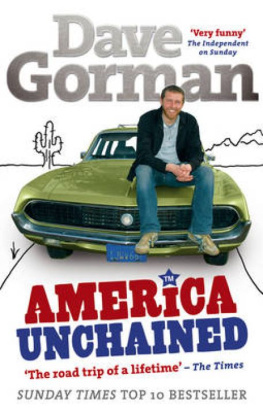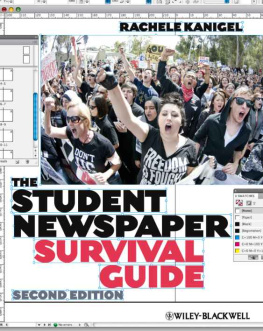
Crash to Paywall
Crash to Paywall
Canadian Newspapers and the Great Disruption
BRIAN GORMAN
McGill-Queens University Press
Montreal & Kingston London Chicago
McGill-Queens University Press 2015
ISBN 978-0-7735-4591-5 (cloth)
ISBN 978-0-7735-4592-2 (paper)
ISBN 978-0-7735-9760-0 (ePDF)
ISBN 978-0-7735-9761-7 (ePUB)
Legal deposit third quarter 2015
Bibliothque nationale du Qubec
Printed in Canada on acid-free paper that is 100% ancient forest free (100% post-consumer recycled), processed chlorine free
This book has been published with the help of a grant from the Canadian Federation for the Humanities and Social Sciences, through the Awards to Scholarly Publications Program, using funds provided by the Social Sciences and Humanities Research Council of Canada.
McGill-Queens University Press acknowledges the support of the Canada Council for the Arts for our publishing program. We also acknowledge the financial support of the Government of Canada through the Canada Book Fund for our publishing activities.
Library and Archives Canada Cataloguing in Publication
Gorman, Brian, 1950, author
Crash to paywall : Canadian newspapers and the great disruption / Brian Gorman.
Includes bibliographical references and index.
Issued in print and electronic formats.
ISBN 978-0-7735-4591-5 (bound).ISBN 978-0-7735-4592-2 (paperback).ISBN 978-0-7735-9760-0 (ePDF).ISBN 978-0-7735-9761-7 (ePUB)
1. Newspaper publishing Economic aspects Canada. 2. Journalism Economic aspects Canada. 3. Newspaper publishing Canada. 4. Electronic newspapers Canada. 5. Canadian newspapers. I. Title.
PN4914.F5G67 2015 | 071.1 | C2015-903772-7 C2015-903773-5 |
Set in Sabon 10.5/13 and Avenir.
Interior book design and typesetting by James Leahy.
For Diane, Patrick, Connor, Sean, and Katie
Contents
Acknowledgments
First, I would like to thank my editor, Mark Abley, for doing such a magnificent job of mentoring, editing, and advising. For all of that, and for his bottomless patience, I am eternally grateful. I have met many editors in my time and he is as good as they get. I would also like to thank copy editor James Leahy for his help in fine-tuning the manuscript, and for his patience with my occasionally prickly attitude. The book is much better for his input.
Next, I want to thank my doctoral adviser, Dr Christopher Dornan of Carleton University, whose advice, insight, and constructive criticism went a long way toward making this project possible, as well as Drs Michael Dorland and Andr Turcotte, also of Carleton, who provided invaluable encouragement and advice. Thanks, as well, to Concordia University Distinguished Professor Emeritus Dr Enn Raudsepp for throwing his support behind this project.
Also, though it almost seems redundant considering how remorselessly I have rummaged through their work, I need to say thank you to the giants upon whose shoulders I have tried to stand, the dedicated reporters and industry observers who worked so hard every day to put the unfolding craziness into perspective and context and often did so under financial fire. Their first draft of history was, as journalism is at its best, chaotic, contradictory, frustrating, confusing, brilliant, and riveting.
And then there are the three dozen or so journalists, news industry executives, and scholars who agreed to be interviewed for this book. Their extraordinary generosity in sharing their time and ideas is greatly appreciated.
I also would like to thank the people at McGill-Queens University Press: executive director Philip Cercone, managing editor Ryan Van Huijstee, graphic designer David Drummond, publicist Jacqui Davis and the MQUP marketing team, and the members of the editorial board. Writing may be a lonely occupation, but publishing is a team effort.
Thanks also to my colleagues in the Department of Communication Studies at MacEwan University for their support, and to my students for their feedback, input, challenges, arguments, and inspiration.
Finally, a big thank-you to the anonymous peer reviewers who read my manuscript (in one case twice) and provided invaluable constructive criticism.
Preface
The starting point for this project was an off-hand comment by the publisher of the Ottawa Sun in the mid-1990s. The price of newsprint had shot up, and he was speculating on how nice it might be to run a radio or TV station, where expenses consist of an office, a broadcast tower and a handful of employees. Looking back, I think that sentiment probably was widespread among publishers, and their desire to transform the business into another type of broadcasting industry may have helped take newspapers to where they are today.
The publisher was John Paton now CEO of the US news organization Digital First Media, formerly the Journal Register Co. In 2009, he was responsible for the Ben Franklin Project, in which the newspapers in the Journal Register chain were put out for one day using freeware, shareware, crowd-sourcing, and citizen journalism. That year, Paton was named publisher of the year by Editor and Publisher magazine. In the fall of 2012, his company went into Chapter 11 bankruptcy protection for the second time. It has since, through merger, been reborn as a publisher of 800 digital and print products.
I also remember Sun Media tech guru Wayne Parrish now a senior executive at Postmedia Network Inc., Canadas largest newspaper chain by circulation doing a show-and-tell at the Sun in the mid-1990s to brief newsroom managers about the companys new Internet site, Canadian Online Explorer, or CANOE. Mostly, I remember him talking about giving away newspaper content to draw readers into virtual shopping centres. Several years later, Parrish told me: The essence of the Internet was that they could do all of that themselves To be a middle-man in that world, where you didnt sell anything, where you only facilitated sales, and yet you had no particular competitive advantage to doing that It never quite made sense.
It seems to me that those two moments were eerie glimpses of key milestones on the road to today, like disturbing, ghostly shadows caught in the corner of the eye or gut feelings ignored in the heat of the moment and regretted in the clear light of morning.
The death-of-news panic that began in 2008 has resulted in the popular portrayal of a business instantly rendered obsolete by digital technology, and being forced into extinction by a broken business model. However, a closer look at the press coverage reveals more complex circumstances, which beg to be placed into the context of fifty years of media theory and criticism. As several observers have noted, the discourse has been dominated by a point of view that is business-focused, Western-centric, and cyber-utopian, and that suffers from a severe case of historical amnesia. As a result, much of the public conversation has excluded such constituencies as small dailies, the ethnic press, community newspapers, alternative publications, online news organizations, the emerging online world newspaper, and the business in such nations as India, China, Argentina, Brazil, and sub-Saharan Africa, where daily journalism has been surviving, and in some cases thriving. It also has largely avoided addressing the possibility that many news organizations were, at least in part, suffering the consequences of years of arrogance, in terms of undervaluing their product, taking their advertisers for granted, underestimating the intelligence of their readers, and abdicating their social responsibilities.
Next page


